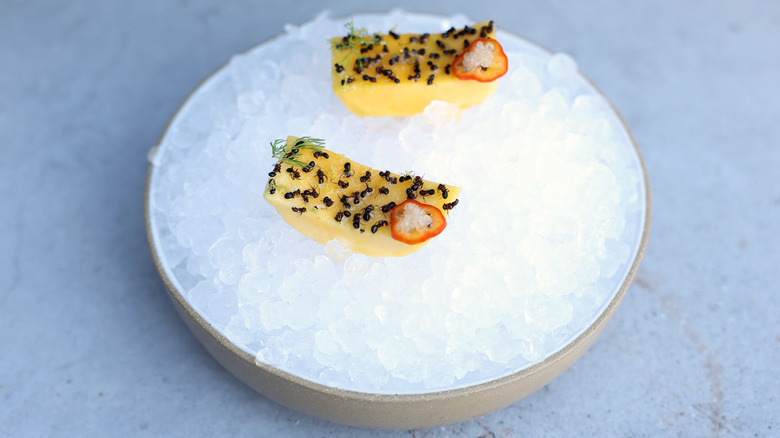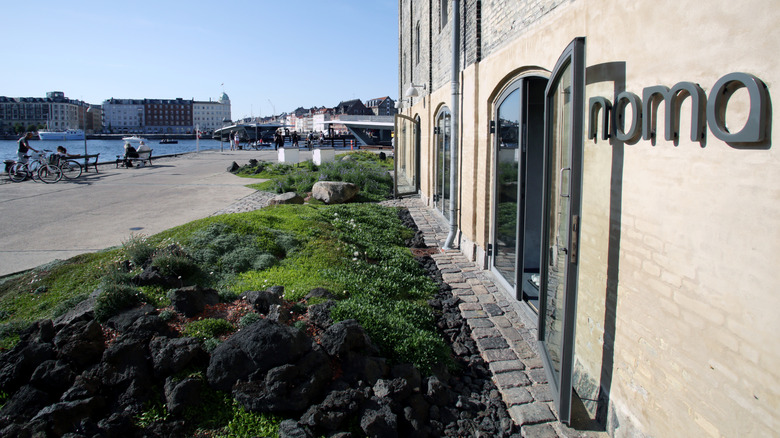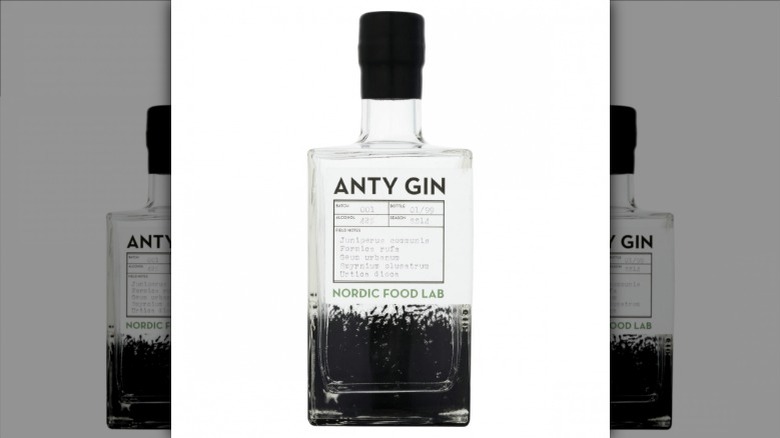Noma Shook Up The World Of Fine Dining With Insects
Many in the Western world question the idea of eating insects, but it's part of a growing trend in sustainable eating. Not to mention, according to the Hunter College New York City Food Policy Center, eating insects is a traditional practice in some countries, such as Cameroon, the Philippines, and Zambia, where migratory locusts are consumed. Lately, the European Union has also been trying to champion bugs as Western food. This is because insects are full of fat, protein, and vitamins, and farming them has fewer negative environmental impacts than traditional livestock.
As such, there are now myriad restaurants striving to make bugs taste delicious, like Noma. This famous restaurant, which opened in 2003, is constantly innovating (via AP News). For example, back in 2015, the restaurant closed and then reopened with its own vegetable farm in a changed location. Later, in 2023, Noma once again announced that it would be reinventing itself, this time as a giant test-kitchen laboratory with less of a focus on serving diners. In the end, though, Noma's most revolutionary legacy may stem from its serving of insects.
Live bugs were on Noma's menu
Why doesn't the Western world eat more insects? Per the Hunter College NYC Food Policy Center, some theorize it's because Europe's cold climate means that there are few large and edible bugs around. So, its cultures rarely saw insects as a food source. Yet, when René Redzepi — co-owner and head chef of Noma — tried Amazonian ants that tasted of kaffir lime and lemongrass, he questioned if his home country of Denmark truly was devoid of delicious bugs (via ZDNet). Thus, by 2012, you could find fermented cricket paste and crème fraîche with live ants on the Noma menu.
Chefs from places such as New York and Paris dismissed the idea as a gimmick. Redzepi found that to be closed-minded and self-righteous. In a 2012 interview at the New Yorker Festival, Redzepi spoke of his passion for serving all kinds of local cuisine, including Danish bugs (via Eater). "I know it's taboo to eat bugs in the Western world, but why not, when it adds letters to your vocabulary?" posed Redzepi. Emphasizing his point further, he pointed out that westerners already eat a lot of insectoid cuisine, "If you like mushrooms, you've eaten so many worms you cannot imagine," Redzepi explained, "but also we eat honey, and honey is the vomit of a bee." Perhaps it's not so outlandish, after all, to use bugs as a condiment or spice, even if they haven't quite attained main dish status yet.
The Nordic Food Lab studied entomological gastronomy
René Redzepi's passion for bugs extends beyond merely the Noma kitchen. Per ZDNet, in 2008, Redzepi co-founded the Nordic Food Lab, a non-profit offshoot of Noma that focused on culinary research. According to Noma, this included a specific focus on bugs' gastronomic potential in the Western world, which would help meet the world's rising food demand. Specifically, the lab hoped to do this by developing new insectoid foods, promoting a variety of bugs, and informing the public about their findings. It also studied Western cuisine from a cultural angle, hoping to find entry points for its buggy dishes, while looking to other global regions for inspiration.
Its gastronomic experiments have included bee mayo, fermented prawn, grasshopper garum, and salted larvae. The Nordic Food Lab, in collaboration with the Cambridge Distillery, has also unveiled Anty Gin. This commercially available gin is made of red wood ant, plus Alexanders seed, juniper berries, nettle, organic wheat, and wood avens. Are these creations appetizing enough to turn creepy crawlers mainstream? Noma's Redzepi certainly hopes so, but ultimately, it's up to the critics and fine diners of the world to decide.


